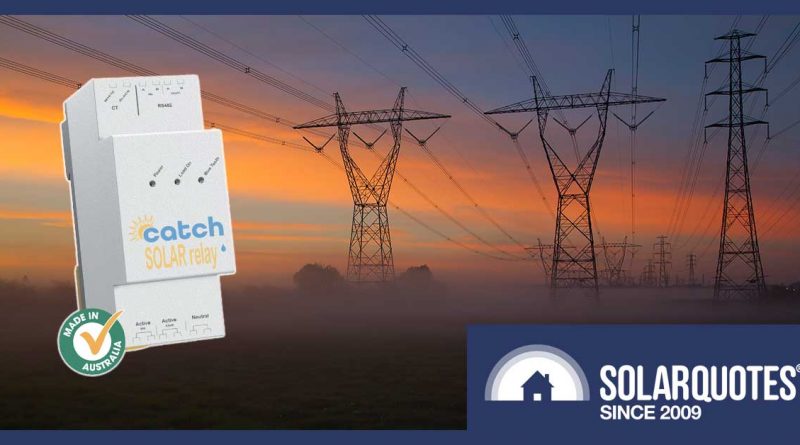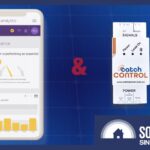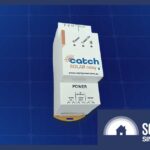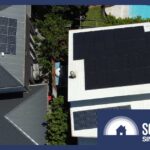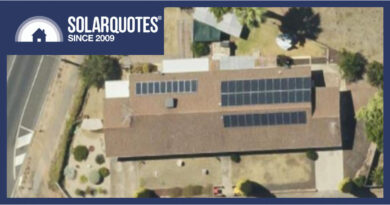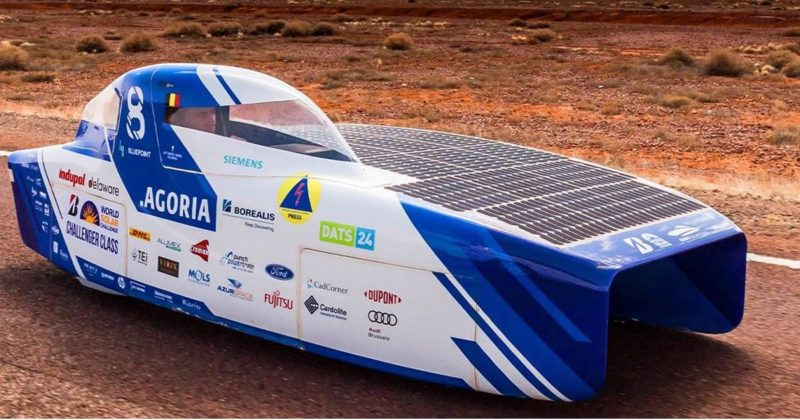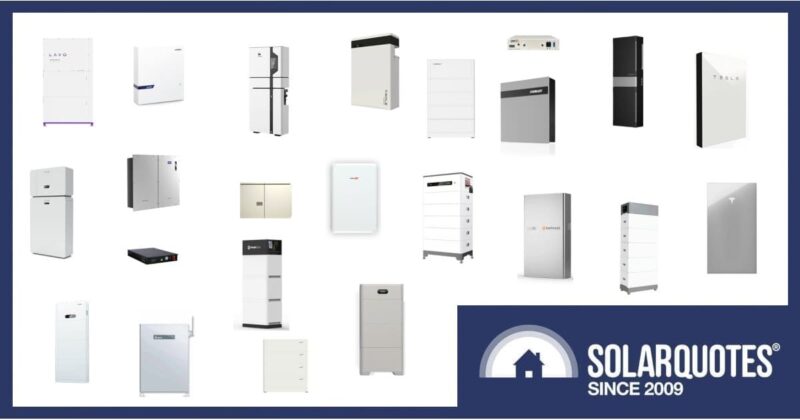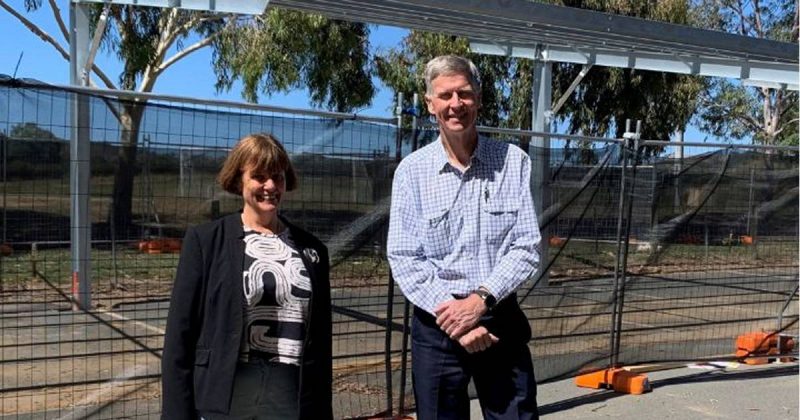Catch Solar Relay: Load Diversion For Local Grid Stability
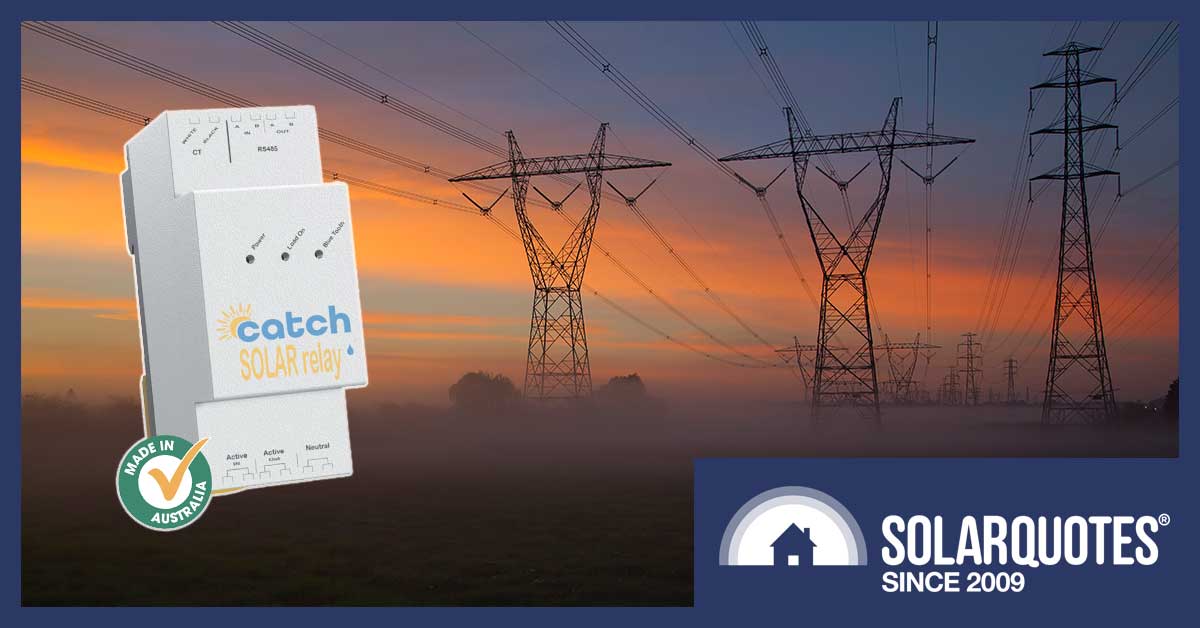
A properly configured Catch Solar Relay can help increase your solar energy self-consumption and individually make a small contribution towards grid stability.
Australian solar owners: you now have a new option to put your self-consumption on autopilot while helping both stabilise the grid and enabling more of your neighbours to install solar power systems.
Catch Power is finally shipping its much anticipated multi-load Catch Solar Relay, so SolarQuotes caught up with the Glen Innes company’s co-founders Scott Young and Jason De Jong to chat about the device.
Catch Power is already a local success story, with 4,000 units of its Green CATCH product, which diverts excess solar energy production to water heating. Catch Power got in touch with us after reading about the Paldin system that uses air conditioning as the target diversion load.
The company’s first two products, Blue CATCH and Green CATCH, had the consumer in mind, but designer De Jong said the company wanted to add other loads to the roster – because that would expand households’ contribution to stabilising the grid.
The Catch Solar Relay is a unit that doesn’t focus just on water heaters, but adds appliances such as air conditioners, pool pumps, water pumps, lighting circuits, fans and underfloor heating to the list.
Catch Power’s Focus
De Jong and Young told SolarQuotes the big picture has to be the motivation for everything they do. De Jong said if the fundamental issue – decarbonising the economy – isn’t the fundamental reason they design something, the solutions aren’t right.
“What underpins every waking moment of the day isn’t the electronics, it’s the fundamental requirement to decarbonise the economy”, De Jong said.
“Our focus is making sure we can transition as fast and hard as we can.”
While there are disputes about the degree to which solar-driven voltage rise is constraining the network today (we discussed UNSW’s research into the causes of voltage rise here), there’s no doubt that it’s going to be a growing roadblock to new household solar power uptake – hence the renewed attention on using local consumption to make use of the excess power. That’s better than having consumers trying to send unwanted energy to the network and having their inverters shut down to protect the network.
Catch believes more than 80% of what’s now exported could be redirected to self-consumption, which would go a long way to relieve the pressure on the network and enabling further renewable deployment.
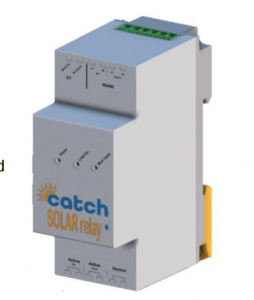
A simple approach to load diversion: the Catch Solar Relay
De Jong told us Catch Power wanted a system that could be as autonomous as possible – it should respond to a local signal rather than waiting for an instruction from some kind of centralised system.
Voltage – the notional 230V the network delivers to the household – is the obvious local signal.
“We need devices that understand more about what’s required to maintain a stable network, rather than devices that just respond to central control.”
Macro Versus Micro
De Jong said at the macro level, the important signal of network health is frequency – which is why FCAS (Frequency Control Ancillary Services) is the service that delivers such handy revenue to the Tesla-powered Hornsdale Power Reserve.
Frequency matters at the household level, but De Jong said if a household is observing significant frequency drift, there’s something seriously wrong at the macro level.
Voltage trends, on the other hand, tell you what’s going on more locally.
“Measuring and interpreting voltage seems like a simple concept, but what you’re looking for is … how is the voltage changing over time?”
If you carry out detailed monitoring at the household level, he said, the instantaneous voltage is all over the shop – but with that detailed monitoring, you can also see voltage changing over time, which is what matters in making power diversion decisions.
De Jong stated with the smarts to behave autonomously:
“unknown to each device, their actions are collectively working to support the network.”
There’s a small bit of secret sauce involved, because if all the devices responded identically and simultaneously to network conditions, there would be a huge overshoot. You don’t want 100 air conditioners (for example) starting in the same second because voltage started rising.
“So they [the Catch Relay devices – SQ] don’t all act at the same time – a single device might ramp up a load but not all devices at once.”
As well as a voltage sensor and the ability to power up different loads in the consumer’s home, the relay has a current transformer to measure import/export, also to inform decision-making.
Loading Up The Local Network
An important aspect of the Catch Solar relay, one that won’t matter to the individual but could make it attractive to network operators, is that a network of household relays “below the transformer” is effective even if not all the households have solar panels.
Taking just the water heater as the connected load, in a white paper provided to SolarQuotes the company describes the operation like this:
“CATCH Solar Relays do not rely on any form of communication to coordinate ramp up and ramp down. CATCH Solar Relay uses a combination of inherent differences in the electrical wiring between each installation, and statistically distributed ‘switch on’ and ‘switch off’ times. The combination of these two things means once an intervention event is detected the loads are gently ramped up or down.”
If Catch Power can get the relay widely deployed, Young says it could “free up” as much as 38% of the solar generation in the network.
“If you can take back 38% of all solar in the network, it means a whole lot more solar can go in,” Young said.
“That’s important for a lot of reasons – we have international obligations to meet, there’s an electorate that’s hungry for solar, and the environment needs it. Coming up with technologies that will allow more solar to go into the network is a great idea”.
And De Jong pointed out having a significant percentage of available solar power operating self-consumed loads acts as a strategic reserve for the network.
“Say there’s a failure in the system, this energy reserve is built into the NEM – so there’s frequency variation, the hot water services turn off, and flood the network with needed energy.”
Original Source: https://www.solarquotes.com.au/blog/catch-solar-relay-ships/

